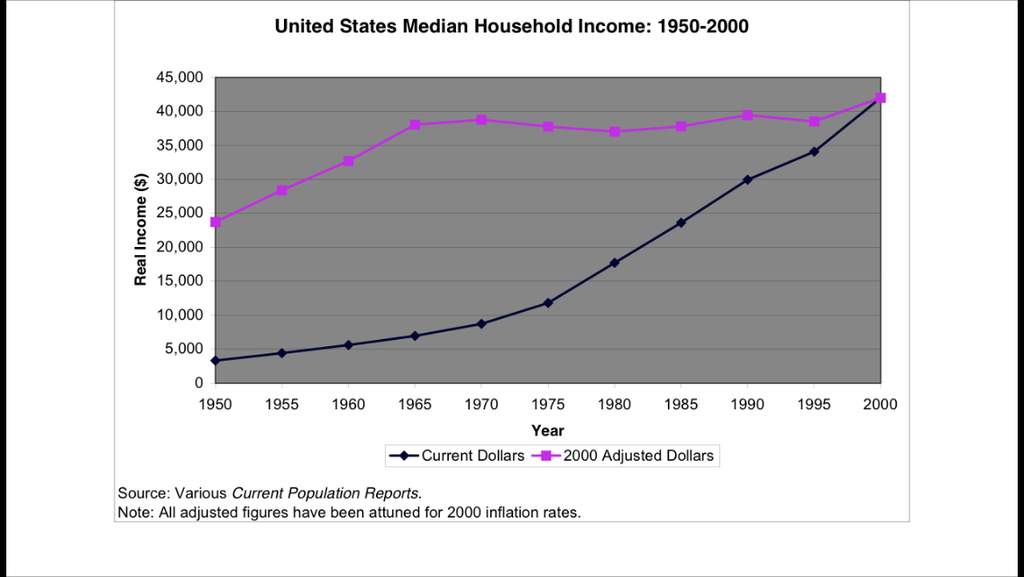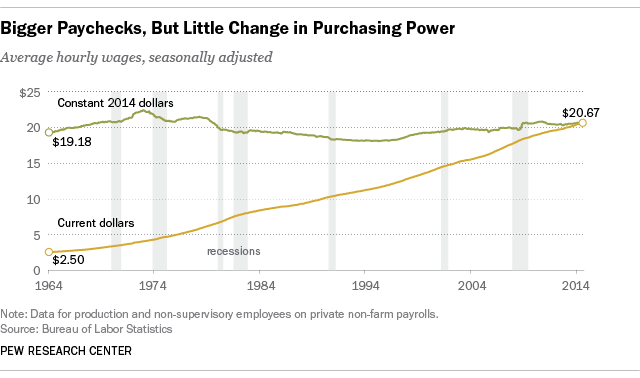How many tax cattle are required to work today, in order to maintain our current lifestyle? The welfare programs go hand in hand with our decline.
Two folks working to maintain today's standard of living, compared to one maintaining 1955 standard, and keeping the family unit together is comparing apples to oranges.
It may be - just maybe, that going back to what was successful before, could prove to be successful again.
You know, if you downsized to a 1950s 980sq ft house, cut the cell phones out, cut cable TV and internet, only had one reasonable car, I'd venture a guess that you could live comfortably on one income and have mom stay home. I mean if we are talking apples to apples.











